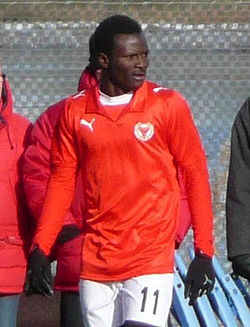Historical context
Division 2 is the fourth-highest division in Swedish Football. It currently comprises six regional leagues which may show some small changes to their titles year on year reflecting the changing geographical distribution of clubs. The six sections for the 2014 season cover Norrland, Norra Svealand, Södra Svealand, Norra Götaland, Västra Götaland and Östra Götaland. [3]
The name of Division 2 has been around since 1924/25 season when there were 5 sections titled Uppsvenskan, Mellansvenskan, Östsvenskan, Västsvenskan and Sydsvenskan which were run on an unofficial basis. Division 2 became official in 1928/29 as the second tier of Swedish football with 2 sections being created - Norra and Södra - with a total of 20 teams. [4]
In 1932/33 Division 2 was expanded into 4 sections covering Norra, Östra, Västra and Södra. This format continued until the end of the 1946/47 season. For the 1947/48 season a 2 section structure was restored comprising the Nordöstra and Sydvästra sections. In 1953/54 a section representing the northern clubs in Sweden was introduced for the first time known as Norrland. The other two sections were titled Svealand and Götaland. In 1955/56 it was decided that Götaland should have 2 sections. This provided Division 2 with 4 sections covering Norrland, Svealand, Östra Götaland and Västra Götaland. [4]
In 1972 the structure reverted to 3 sections titled Norra, Mellersta and Södra. This was short-lived and in 1974 two sections covering Norra and Södra were consolidated. This system continued until the end of the 1986 season when the competition became Division 1. [4]
From 1987 onwards Division 2 became the third highest league in Swedish football and this continued until 2005. The new division initially had 4 sections titled Norra, Mellersta, Östra and Västra. In 1993 it was divided into 6 sections titled Norrland, Östra Svealand, Västra Svealand, Östra Götaland, Västra Götaland and Södra Götaland. [4]
In 2006 Division 2 became Sweden's fourth highest division with the introduction of Division 1 below the Superettan. [4]
This page is based on this
Wikipedia article Text is available under the
CC BY-SA 4.0 license; additional terms may apply.
Images, videos and audio are available under their respective licenses.






